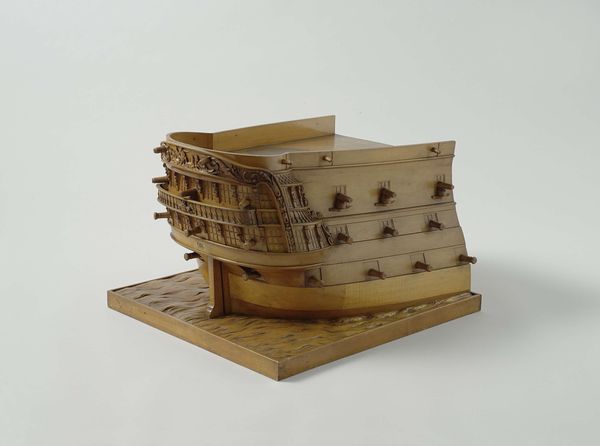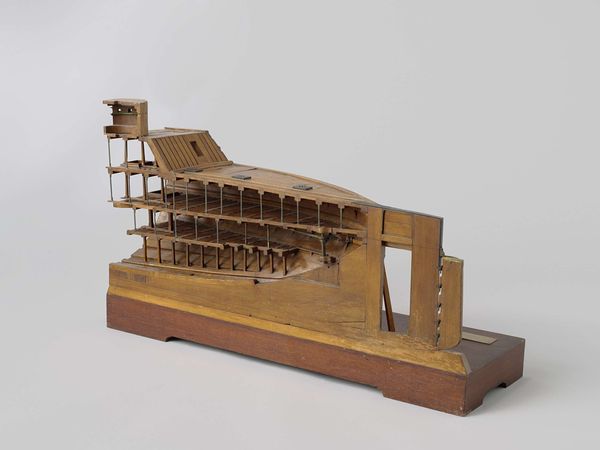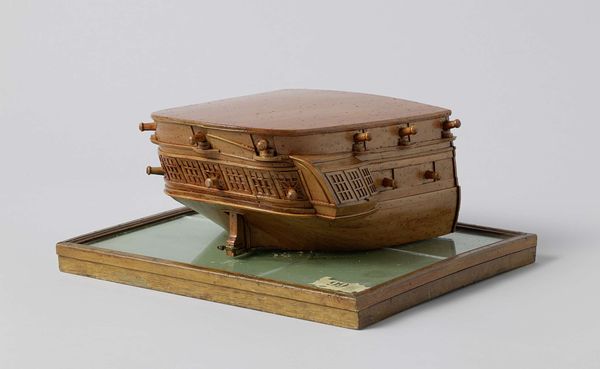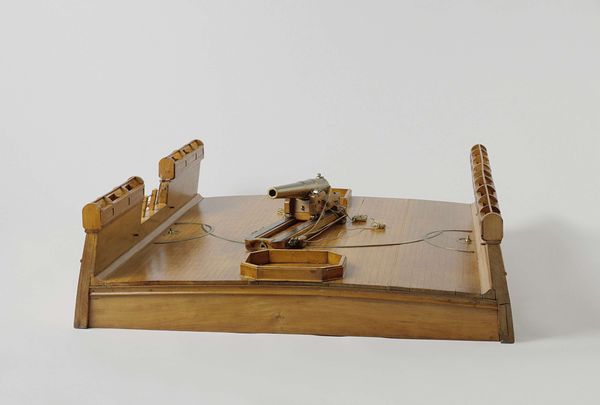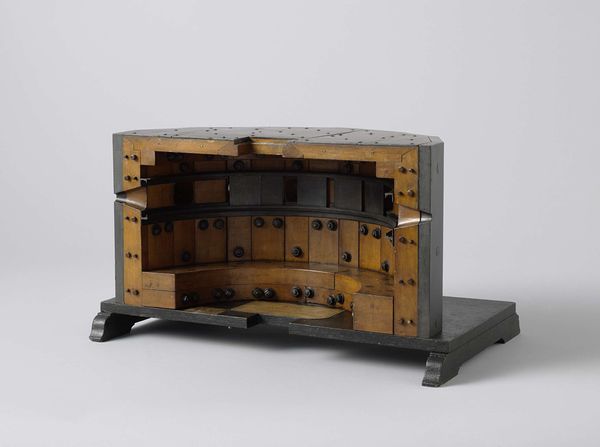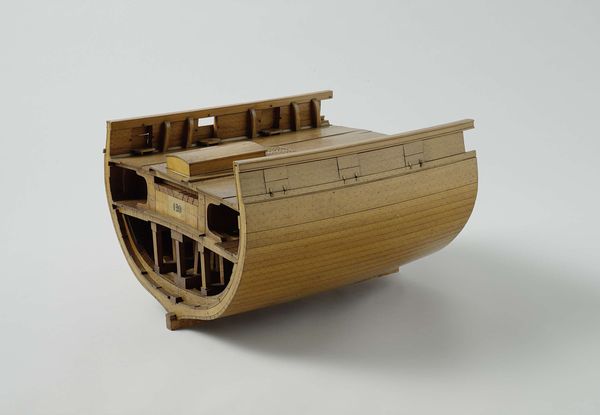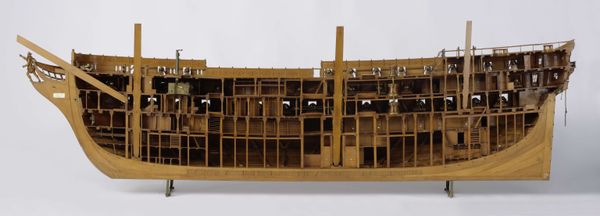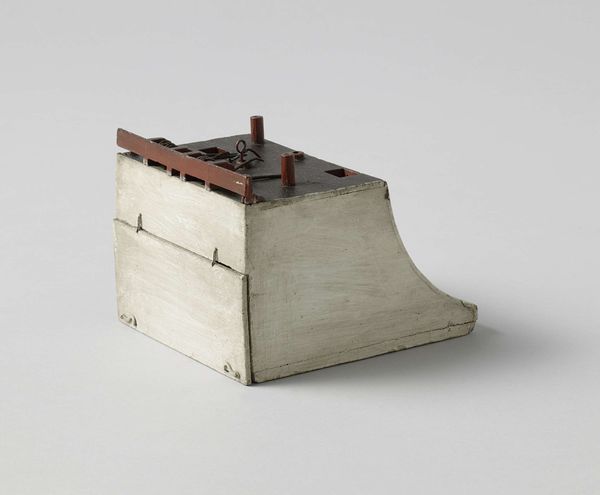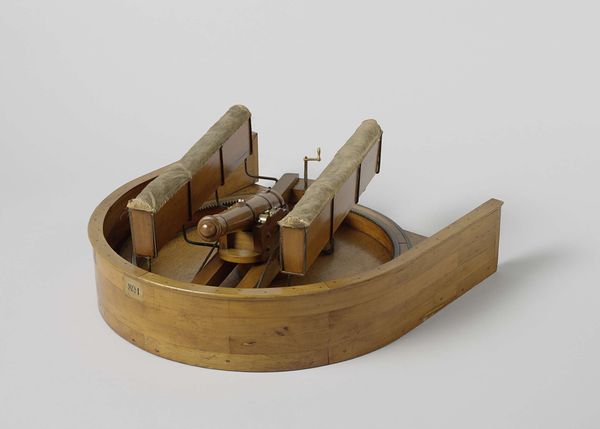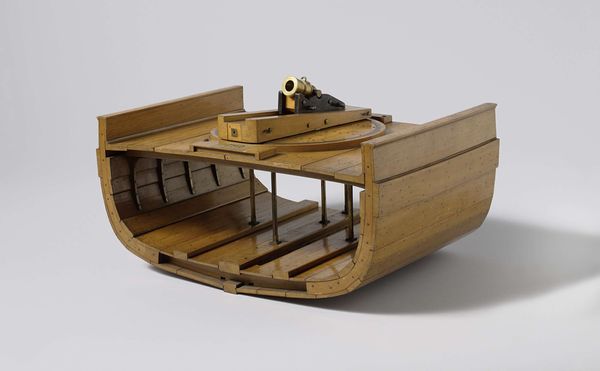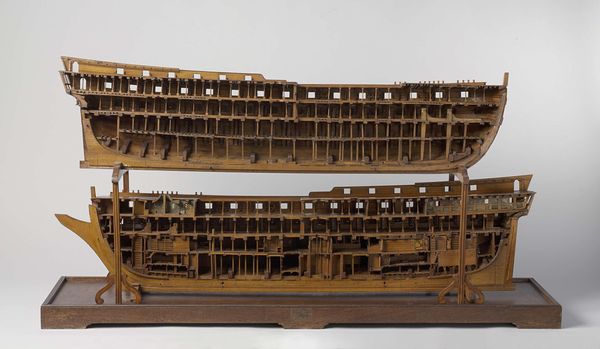
sculpture, wood, architecture
#
sculpture
#
sculpture
#
architecture model
#
wood
#
architecture
Dimensions: height 35.5 cm, width 55.5 cm, depth 50 cm
Copyright: Rijks Museum: Open Domain
Curator: It has a sort of melancholic beauty, doesn't it? Even in miniature, the stern of this 84-gun ship of the line evokes such maritime power. Editor: Indeed, its quiet power speaks volumes, doesn't it? This is an architectural model in wood dating back to 1820. Think of the skill and labor invested in crafting each layer of timber! The precise joinery, the hours spent shaping each piece… Curator: I immediately zoom in on the figures embellishing the balcony, the stern. The sheer volume of sculpted details tells a story, I’d suggest. Look at those faces—gargoyles, really— fixed between the cannons; or consider those rosettes in an orderly manner, decorating all decks in line. Editor: Yes, the iconographic density is incredible. But let's consider where and why something like this was made. Naval power was obviously a critical factor in early 19th-century trade and, of course, geopolitics. Was this a craftsman’s model to demonstrate his expertise to the navy or maybe even just a piece intended for the upper classes? The work clearly embodies social status and power relations. Curator: Absolutely. Each of those gunports is such an overt display of dominance. Yet, thinking about craftsmanship… ships carried complex emotional significance. They represented not only nationhood, trade and military force, but also the dreams and ambitions that drove society. What tales were woven into that woodwork? Editor: And the production of those cannons themselves – a colossal demand for iron and labor and indicative of broader social demands for resource extraction and material supply lines that were fundamental to naval dominance at the time. Curator: Thinking about the scale here - miniatures carry such power, concentrating stories into an almost digestible form. What collective hopes and anxieties are embedded within such an intricate model of marine engineering and human endeavor? Editor: Well, for me it emphasizes that craft practices and their objects are not isolated acts but reveal much wider industrial production, and power. These modes offer significant insights into societal forces at play during its making. Curator: A poignant example of the symbolic weight carried even by what seems like a miniature. Editor: Precisely, and one demonstrating production methods.
Comments
No comments
Be the first to comment and join the conversation on the ultimate creative platform.
